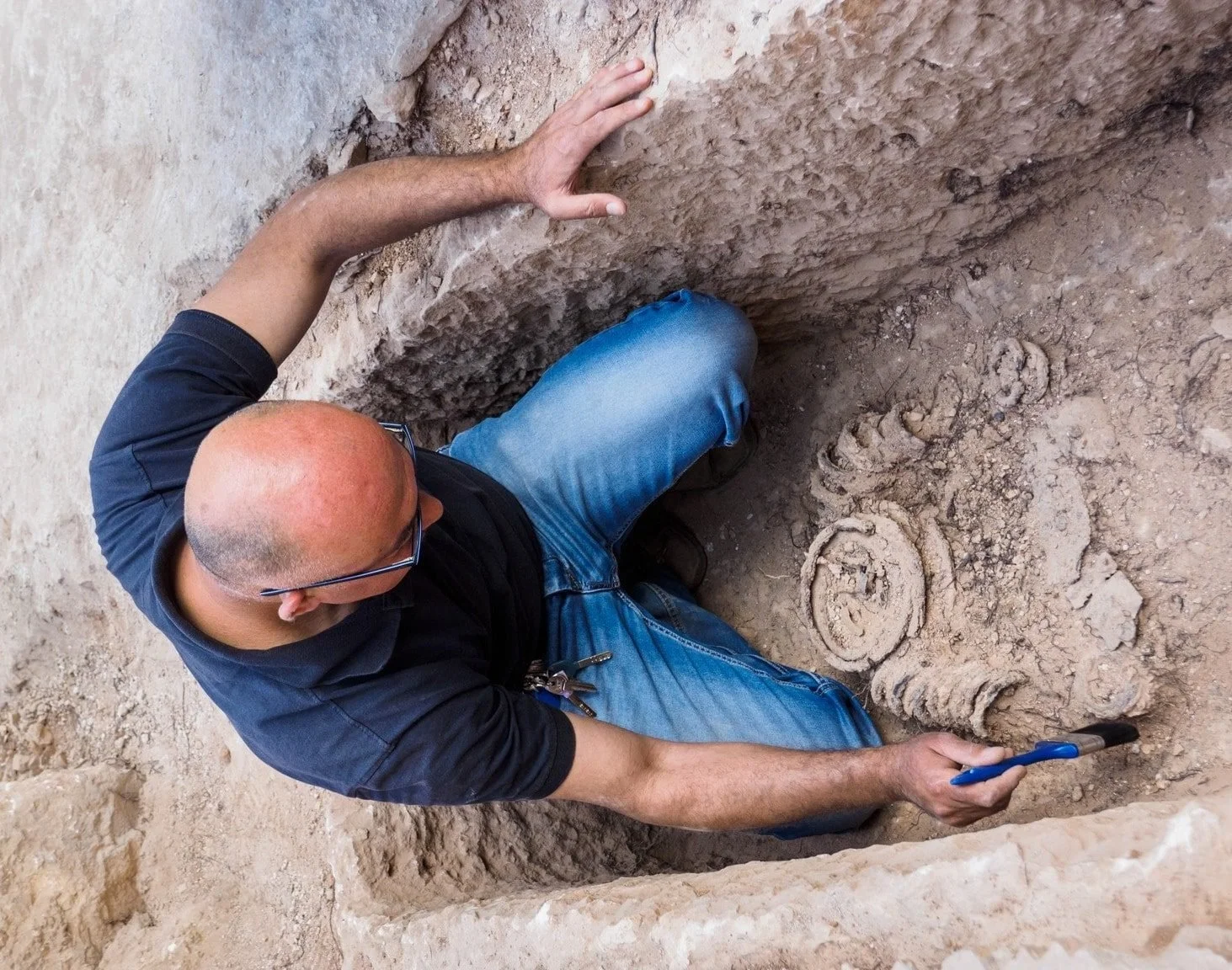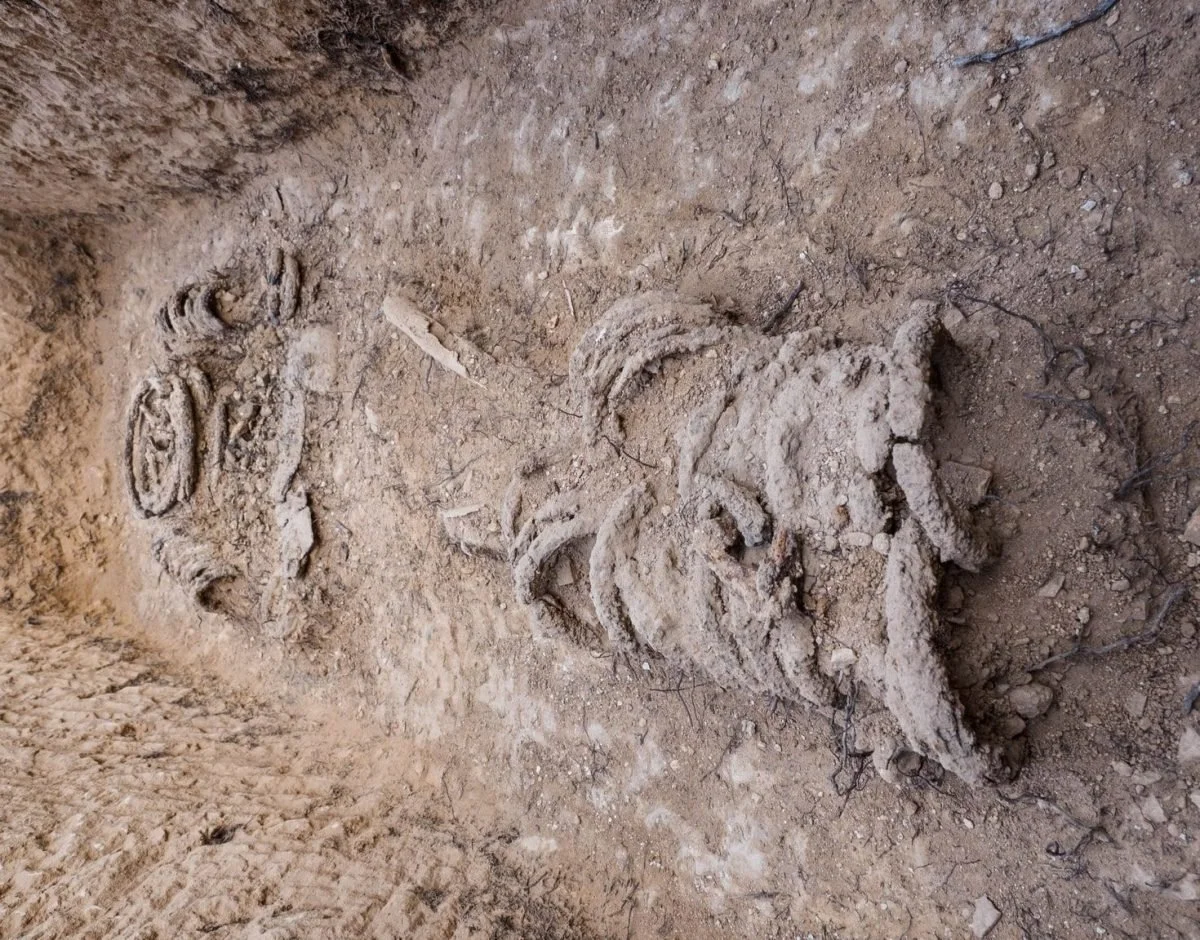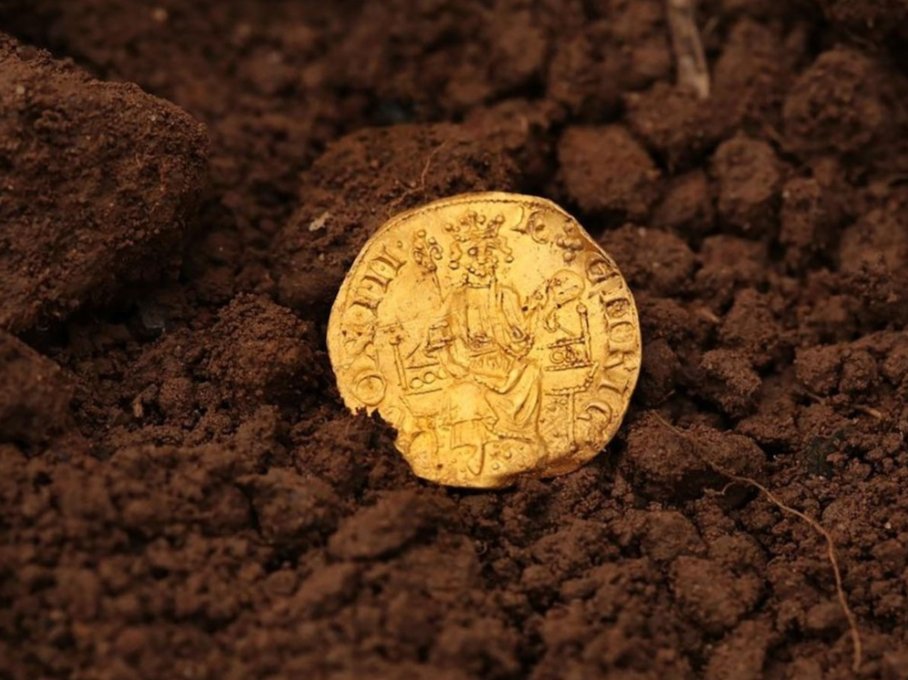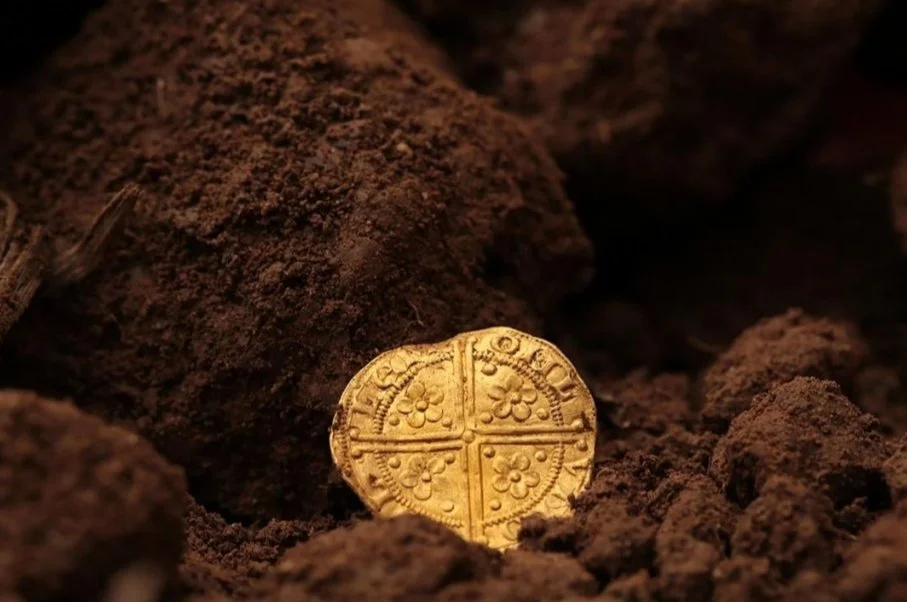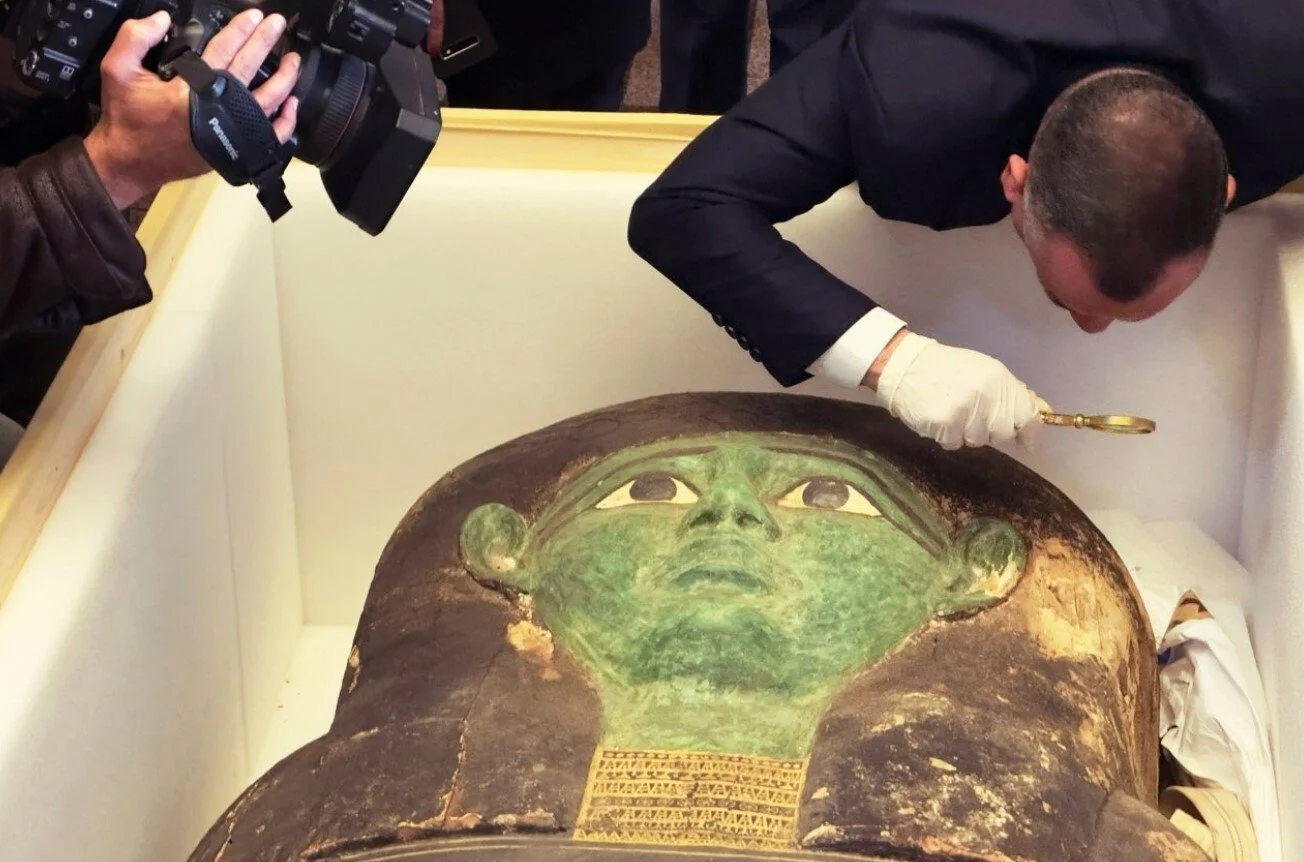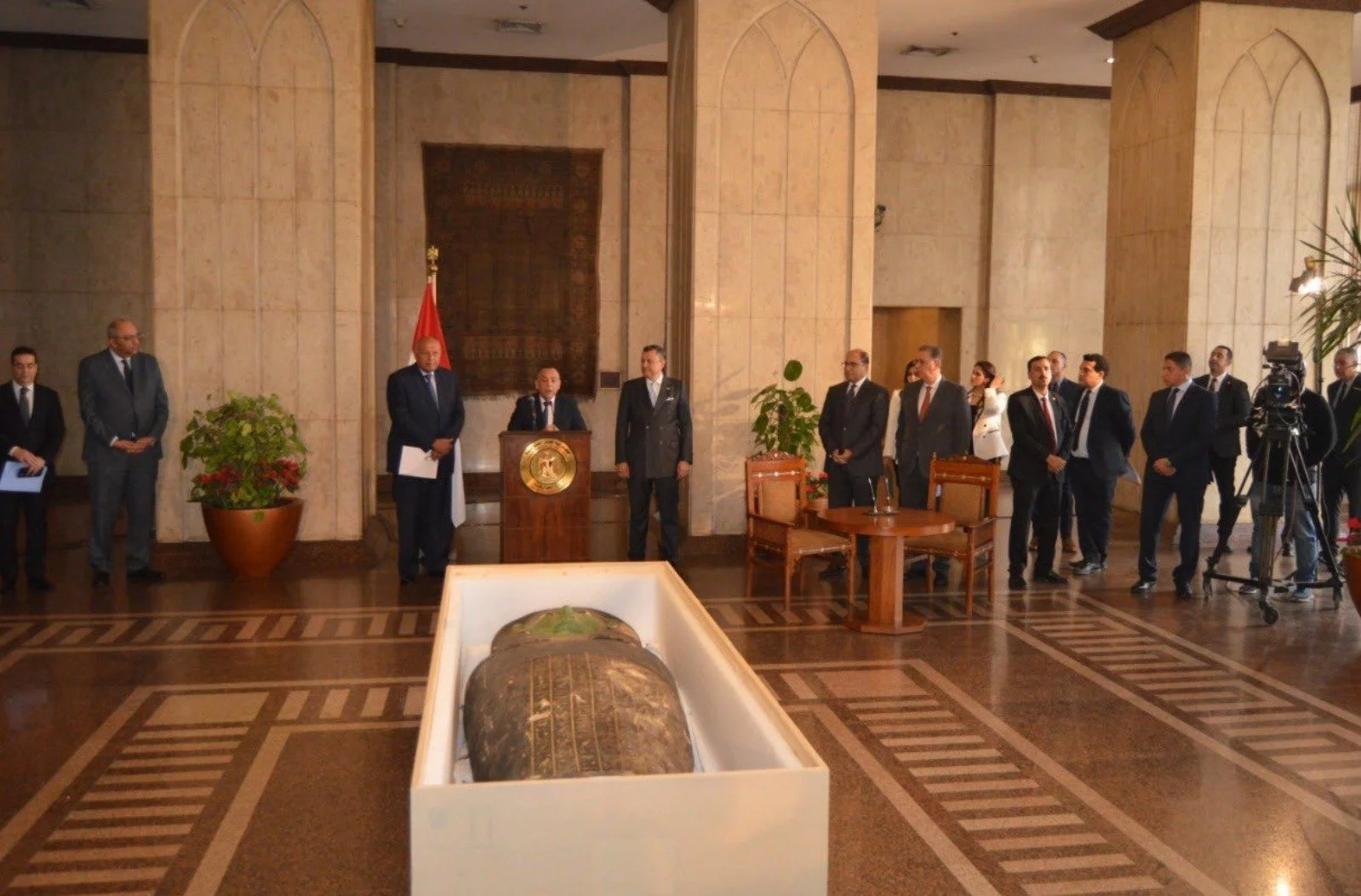In this video we will explore the strangest mysteries of the Ancient Egyptian Sphinx. Watch & enjoy!
Could This Ancient Cretan Relic Be A Fake? | The Secret Of The Phaistos Code
The film examines one of the greatest archaeological scandals ever. In 1908, the "Phaistos Disc" was discovered by the Italian archaeologist Luigi Pernier. Since then, the disc has aroused scientific debates. Is the Phaistos Disc a clever fake? Among other experts, art historian Jerome Eisenberg is convinced that it is. The search for the truth starts in the ancient Cretan palace complexes of Phaistos.
What Was the Ancestor of Everything?
The search for our origins goes back to a single common ancestor -- one that remains shrouded in mystery. It’s the ancestor of everything we know and today scientists call it the last universal common ancestor, or LUCA. Watch the video below for more!
This Terrifying Discovery In Egypt Scares Scientists!
Egypt is home to one of the world's first continuous cultures. Every year, scientists and archaeologists anticipate uncovering even more astounding and unexpected findings. Many unanswered questions and truths have yet to be revealed. The more we learn about this amazing civilization, the deeper back in time we go. Do you think we as a species must dig deeper into our history? Possibly its significance exceeds our current estimation.
Enormous Out of Place Artifacts Left By Giants?
Could enormous out of place artifacts have been left by giants? Watch the video below to find out!
Ancient Greek Quotes to Strengthen Your Character
The ancient Greeks were the first to introduce democracy, theatre and much more. There wisdom is timeless and they are famous for their knowledgeable philosophers. This videos includes quotes from some of the greatest thinkers from ancient Greece such as Socrates, Plato, Heraclitus and Aristotle.
A good quote can offer a lifetime of experience in a simple sentence or statement. They are lessons forged through the overcoming of obstacles and set backs that are passed on to others like a baton in a relay race. They say, "here's what I learned, now use it and go even further."
Archaeologists Have Unearthed A 9,000 Year Old City In Israel That Rewrites Human History
When the Netivei Israel Company wanted to build a new road from Motza to Jerusalem, its managers no doubt assumed that it would be a simple enough process. The area where the road was planned wasn’t thought to contain any significant historical sites, for one thing. But then a survey of the land revealed something remarkable just inches below the surface.
12 Most Mysterious Artifacts Finds That Scientists Still Can't Explain
Can science come up with an explanation for everything? No, of course it can’t, and nor should we expect it to. Life is better when there’s a mystery or two to solve, and some of the world’s greatest mysteries can be found in the shape of some of its most ancient artefacts! Some of the things left behind by our ancestors have kept their secrets for hundreds or even thousands of years - as you’re about to see!
The HORRIFYING Truth About Ancient Egyptian Discoveries
A country with one of the world's oldest now-lost civilisations never ceases to astonish the globe with its incredible mysteries. Some of its secrets remain unsolved to this day. These mysteries include some of the world's most haunted locations, where ghosts from the world's oldest civilisation have been spotted walking freely in this ancient region. Egypt is a haven for those who enjoy mysteries, yet these haunted riddles are not to be taken lightly or for granted.
These Archaeologists Have Found A Viking Ring That Had This Inscribed On It
These archaeologists have found a viking ring that had this inscribed on it. Today, we take a look at this interest ancient viking artifact that was discovered.
From being amongst the first to discover the new world, to the invention of boats that rivaled the construction methods of the greatest naval fleets ever built, there appears to be a number of mysteries surrounding the ancient viking culture that researchers are still trying to uncover in the modern day.
Going back in 2015, archaeologists discovered an ancient relics that belonged to the vikings.
The new Archaeological Museum of Athens awaits with finds that have never seen the light of day
A new Archaeological Museum of Athens, the "New Museum of the City of Athens", is to be built in the center of Athens. The museum, with a total area of 14,362 square meters, will be built on a site given to the Greek Ministry of Culture and Sports by the Academy of Athens, adjacent to the historic surroundings of the Academy of Plato. The new building will be bioclimatic in order not to pollute the environment, while providing disabled people with unhindered access to all areas.
It was already announced in August that Anaplasi Athens S.A. is launching an architectural competition for the elaboration of the study that will lead to the construction of the Archaeological Museum of Athens, in the place where the museum has been located by law since 2002. The architectural competition is in the Programme Agreement signed by the Minister of Culture, Lina Mendoni, and the Mayor of Athens, Kostas Bakoyannis, in 2021.
Over 160 offices showed interest
According to well-informed sources, the interest in the competition exceeded all expectations, with more than 160 architectural museums from Greece, Europe and America showing interest. For this reason, Anaplasi Athens S.A. has decided to extend the dates. The new date is November 7, 2022.
Besides the enormous historical and cultural value that the creation of the Archaeological Museum of Athens has for the capital, the regeneration of the archaeological site and the grove will create a local pole of culture, greenery and recreation in one of the most degraded areas of the capital. The quality of life of the inhabitants will be improved and significantly enhanced, offering development opportunities and chances for job creation.
Athens gets its own archaeological museum
The Athens Archaeological Museum will exhibit finds from Athens that have never seen the light of day, and there are many of them. Athens, despite its centuries-old history, does not have its own archaeological museum (the existing one in Patision street houses finds from all over ancient Greece).
In fact, the Minister of Culture, Lina Mendoni, had stated in a statement made on the occasion of the launch of the architectural competition that "Athens, with its millennia of history, is perhaps the only metropolis that does not have a museum dedicated to its history and archaeology".
After the conclusion of the architectural competition for the construction, the way is clear for the maturation of the project, which will eventually be realized at the historic site of the Plato Academy.
Byzantine monk chained with iron rings unearthed near Jerusalem
A skeleton chained with iron rings was discovered at Khirbat el-Masani, about four kilometers northwest of Jerusalem, along the ancient route connecting Lod with Jerusalem via Nebi Samuel/Nabi Samwil.
The 1500-year-old skeleton, chained with iron rings, belonged to a Byzantine monk. No doubt, he wanted to achieve a very special goal and he indeed did it.
In the pursuit of salvation, atonement for sin, or spirituality, ascetic monks led a life marked by abstinence from sensual pleasures. More extreme forms of asceticism included self-inflicted pain and voluntary suffering, chaining the body to rocks or keeping it in a cell, praying seated on a pillar in the elements, and solitary confinement.
Archaeologists from the Israel Antiquities Authority previously discovered a tri-apsidal Byzantine-era church at Khirbat el-Masani, which was once a part of a monastery with a road inn for passing pilgrims.
The church is partly rock-cut and built using limestone ashlars (finely dressed stone), which may have been dedicated to Saint Zachary by the priest Sabinus.
In the past, the site was surveyed in the Jerusalem Survey Map, and a small excavation was conducted by the Israel Antiquities Authority archaeologist Dr. Gaby Mazor, exposing the front part of two of the apses.
An extensive excavation carried out at the site in 2017, directed by Israel Antiquities Authority archaeologists Zubair Adoi and Kafir Arbiv and funded by Moriah Jerusalem Development Corporation, uncovered a large architectural complex, comprising the monastery and road-inn and, most prominently, the church, enabling an understanding of the plan, construction methods and the date of the church.
Archaeologists recently found the skeleton of a monk, chained with iron rings around his neck, hands, and feet, was discovered in a cist grave next to two small niche-like closed cells in the central apse of the church. The interred was probably an ascetic monk living in or near the church compound, who bore the chains as part of his devotion.
The practice originated in Syria in the 4th or 5th century AD, but the discovery of the burial shows that during the Byzantine period, this form of extreme asceticism spread as far south as the Jerusalem region.
While the discovery of a chain-clad skeleton is extremely rare in the region, an Israeli Antiquities Authority archaeologist Elena Kogan-Zehavi made a similar discovery in 1991 at Khirbat Tabaliya (Givat Ha-Matos), located between Jerusalem and Bethlehem.
"Ginger" (Gebelein Man): Maybe the oldest Egyptian mummy!
In 1896, the first Gebelein predynastic mummy, 'Gebelein Man,' who was later nicknamed Ginger, was found. His body is very well preserved, including the preservation of the red hair that earned him the nickname Ginger. Studies show that he was around 18-21 when he died. He has been at the British Museum since 1901.
Mummification
Ginger was found in at Gebelein, Egypt, and dates to the Late Predynastic period, around 3400 BC, or earlier. Before mummification was developed, human remains were placed in shallow graves, in direct contact with the hot, dry sand, which absorbed the water in the body. Without moisture, bacteria cannot breed and cause decay, and the body is preserved. It is uncertain whether Ginger’s mummification was intentional or not, though since Ginger was buried with some pottery vessels it is likely that the mummification was a result of preservation techniques of those burying him. He lies in the curled, fetal position common to burials of the time.
Studies
Ginger’s body was buried around 3500 BC in sand graves located near Gebelein, Egypt.
Ginger’s body was removed from the British museum and scanned for further analysis. Experts, who have concluded he was almost certainly murdered, his injuries suggest he was the victim of a deliberate assault, his shoulder blade was damaged and the rib underneath shattered in a manner consistent with a stab wound. He was likely stabbed by a copper or flint blade at least five inches long and CT scans confirmed that he was stabbed in the back.
The mummy was placed on display at the British Museum in 1901.
An extremely rare gold penny discovered in a farm field in England by a metal Detectorist
An amateur metal detectorist unearthed a rare medieval 800-year-old Henry III gold coin on farmland in Devon, England with Coin experts speculating that the penny could sell for around $546,000 at an online auction set for January 23.
Minted around 1257, the nearly one-inch coin depicts the English king, who ruled from 1216 to 1272, sitting on an ornate throne while holding an orb and scepter. It is considered by experts to be one of the earliest gold coins found in England; only seven other coins of this type are known to exist.
The other surviving Henry III gold pennies are at the British Museum in London, Fitzwilliam Museum in Cambridge and in private collections, reports Alexandra Markovich for the U.S. Sun.
The finder, an ecologist who chose to remain anonymous, didn’t realize the coin was so valuable, but he posted a photo of it on Facebook, where a specialist spotted it. “I just happened to see it there and I got in touch to tell him he had to get it assessed,” Gregory Edmund, an auctioneer at Spink & Son, which is conducting the sale, tells the Times.
The ecologist says he was working on a farm field in the town of Hemyock—about 150 miles southwest of London—when his metal detector started pinging, per the Times. He soon realized the significance of his discovery.
According to the Times, around 1240, Henry III proclaimed payments to the crown be made in gold rather than silver to fund foreign wars. The pennies were minted around 1257 by William of Gloucester with gold from North Africa, writes David Carpenter, professor of medieval history at King’s College London, in the Spink & Son’s catalog.
Auctioneer Spink & Son placed the presale estimate for the coin at $546,000. Last year, another Henry III gold penny sold for $720,000 at an auction in Dallas, Texas, to an unnamed bidder, per This Is Money.
Often, the United Kingdom takes possession of antiquities discovered by civilians, offering them a portion of proceeds from the sale to interested British museums. However, under the Treasure Act of 1996, the finder can keep and sell the artifact if it is not believed to be part of a larger trove of items, reports CNN Style.
Egypt: An impressive sarcophagus that had been illegally sold abroad was repatriated
Within a decade, Cairo managed to get back more than 29,000 antiquities that were stolen and sold outside the country
One of the largest pharaonic wooden sarcophagi ever found, illegally exported from Egypt and until recently in the collection of a US museum, was returned to Cairo 4 days ago, Foreign Minister Sameh Hassan Shoukry announced.
"There are two types of sarcophagi: those of royal houses and those of high-ranking officials, this one belonged to an official," said Mostafa Waziri, the director of the Supreme Council of Antiquities.
The announcement was made at a press conference given by Shoukry and Waziri at the Ministry of Foreign Affairs, which was broadcast on television.
The sarcophagus, 2.94 meters long and 90 centimeters wide, dates from the Late Period, about 2,700 years ago, and was found in central Egypt.
Within a decade, Cairo managed to get back more than 29,000 antiquities that were stolen and sold outside the country. In addition to these returns, several important discoveries have been announced in recent months, most notably at the necropolis of Saqqara, south of Cairo. In 2021 and 2022 more than 300 sarcophagi and 150 bronze statues were found, many more than 3,000 years old.
Egypt is relying on these new discoveries to boost its tourism which has been hit hard by the Covid-19 pandemic. This sector, which employs 2 million people and accounts for more than 10% of GDP, has been in decline since the Arab Spring in 2011.
Egyptian authorities have been promising for months that they will soon open the "Great Egyptian Museum" near Giza, but until now they have not announced the exact date of the opening. Many expected this to happen in 2022, on the occasion of the 200th anniversary of the decipherment of the Rosetta Column by the Frenchman Jean-Francois Champollion and the 100th anniversary of the discovery of the pharaoh Tutankhamun's tomb.
15 Most Legendary Swords That Actually Exists
History books wouldn't be complete without the records of weapons used in countless battles. People and places are often recorded as well, but some weapons around the world are so extraordinary that they are also recognized by historians. One could say that swords are the most magnificent weapons mankind has ever invented. Some blades are so significant that their stories transcend time.
Here are several of the most legendary swords that captured the imagination of historians and ordinary people throughout the years.
From the mystical Kusanagi-No-Tsurugi to a 10th-century sword, here are the 15 most legendary swords that actually exist!
How One Man In Egypt Is Keeping This 200-Year-Old Tile Tradition Alive
Saied Hussain has been hand making tiles out of cement for over 50 years. He says he’s one of the last still doing this work in Egypt — most other workshops couldn't withstand competition from marble and ceramic tiles. In this video we will see how his business is still standing!
Euphrates River Has COMPLETELY Dried Up And Something TERRIFYING Showed Up!
The Euphrates is known to be the longest river in West Asia. The Euphrates originates from turkey and flows through Syria and Iraq, and finally joins the river Tigris in Shatt Al Arab. The Euphrates and Tigris hold great importance to the Mesopotamian civilization.
By the senses of 1990, it shows the impact of the construction of dams in the Euphrates. The construction of dams caused an increase in discharge from the Euphrates, and this drastically changed the course of the flow.
Secrets of the Osirion | Who Built Egypt's Biggest Megalithic Temple?
The remarkable Osirion at Abydos in Egypt is officially dated to the reign of Seti I, during the New Kingdom period, ruling c.1294 or 1290 BC to 1279 BC. However numerous scholars and researchers suggest it could be much older with its huge megalithic, perfectly cut blocks resembling those in the 4th Dynasty Valley Temple at Giza. Strabo, who visited the Osirion in the first century BC, said that it was constructed by Ismandes, or Mandes (Amenemhet III), the same builder as the Labyrinth at Hawara.
John Anthony West says there were huge floods that occurred in the distant past and the river silt is evident at the site, so could easily be dated. The Osirion at Abydos in Egypt could have had therapeutic effects, according to Dorothy Eady (Omm Sety) who says she got healed by its waters, as did many others. It also has beautiful geometric 'flower of life' carvings on one of the uprights which have yet to be explained, and nubs, polygonal masonry and intricate, subtle striations and smoothing of the stones, which would not look out of place in ancient Peru. Whether it was 'discovered' by Seti, or whether he built it during his reign is discussed in this video.
12 Most Incredible Unexpected Treasures Found Recently
There's nothing as fascinating in the world of treasure hunting as what's been found recently. Fortunately for us, what's been found recently encompasses a lot of very exciting, very valuable treasures! If we look back over the past few years, we've seen some truly magnificent treasures come to light, and we're going to take a look at some of the best of those treasures now.



